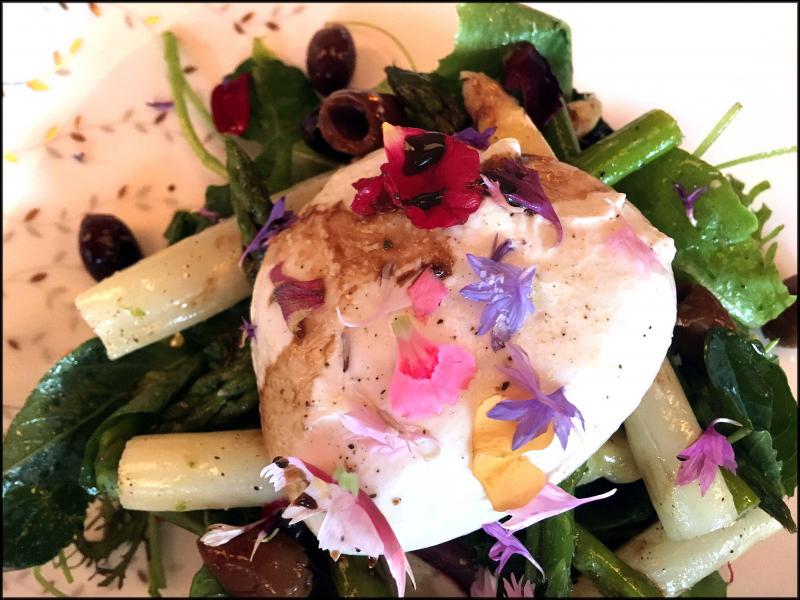One ingredient that’s been appearing with increasing regularity in trendy recipes and restaurant menus is burrata cheese. Originally, burrata was created as a way to salvage scraps of mozzarella cheese left over once the tender balls were formed. Both are types of semi-soft Italian cheese, with a key difference.
Mozzarella, which originated in southern Italy, is often described as a pulled cheese. Made from either cow’s milk (more common) or water buffalo milk (more difficult to find), fresh mozzarella is quite different from the plastic-wrapped balls or grated shreds sold in the grocery store.
Those are usually “low-moisture” mozzarella, with less than 50 percent moisture content and lots of preservatives.
Fresh mozzarella is soft, moist and highly perishable. To make mozzarella, raw milk is pasteurized and then treated with rennet so it coagulates into curds. These are then mixed with hot water and strung or spun into long ropes of cheese. Once the desired consistency is reached, the cheese is formed into balls and transferred into a cold-water bath to maintain their shape.
Mozzarella sold in containers with its liquid (sometimes called “latte”) or directly from the maker should be enjoyed within a few days. Its flavor will be slightly tangy and salty with a rich, milky essence. Whether sprinkled on pizza, tossed with tomatoes and Balsamic vinegar, or melted on hot pasta, the creamy texture and delicate flavor are unmistakable.
Burrata begins as mozzarella (and is rumored to have been developed as a way to salvage leftover scraps of mozzarella), but the center of the ball of cheese is left as a hollow pouch. This is filled with soft, stringy, uncooked cheese curds mixed with cream, which ferments slightly to deliver a stronger flavor than mozzarella. The name burrata translates as “buttered” which is an apt description of its silky center. When the pouch of burrata is sliced open, its creamy interior spills out, delivering an impossibly rich coating over your salad greens, roasted vegetables or pasta. Typically served at room temperature, burrata needs to be eaten within 48 hours to be fully appreciated.
How do you choose which of these two fresh cheeses will work best in your recipe? If you want the cheese to melt over a cooked dish such as pizza, baked ziti or lasagna, select mozzarella. It is better suited to grating and will brown to a lovely golden shade as it melts. If you cook burrata, it will lose its signature texture contrast of milky center and tender exterior. Save this more costly cheese to savor as the centerpiece of a dish.
Credit: https://www.capegazette.com/article/differences-mozzarella-burrata/160665


